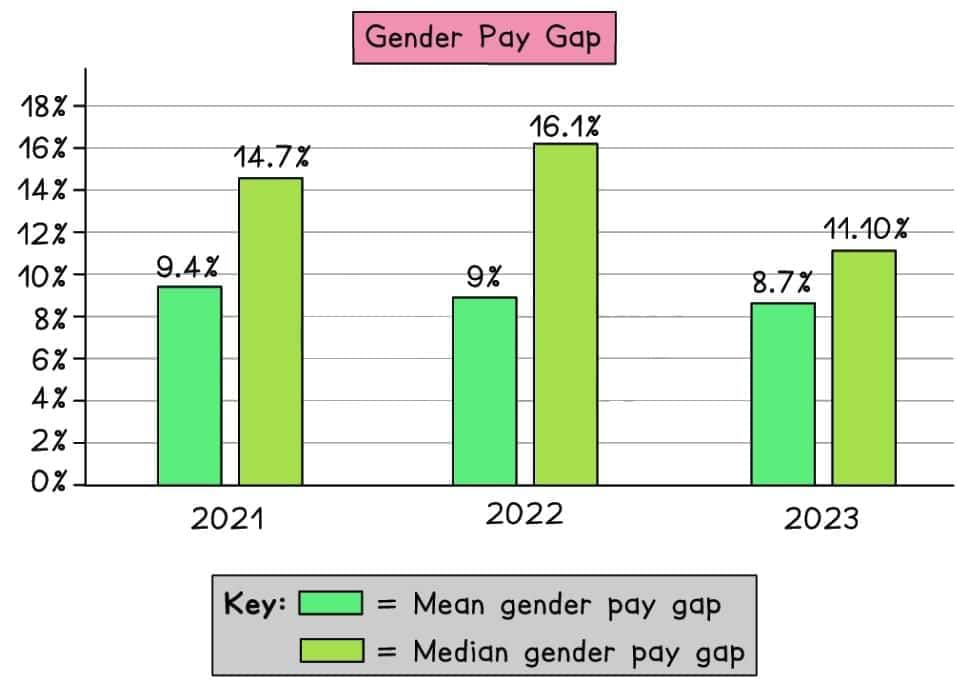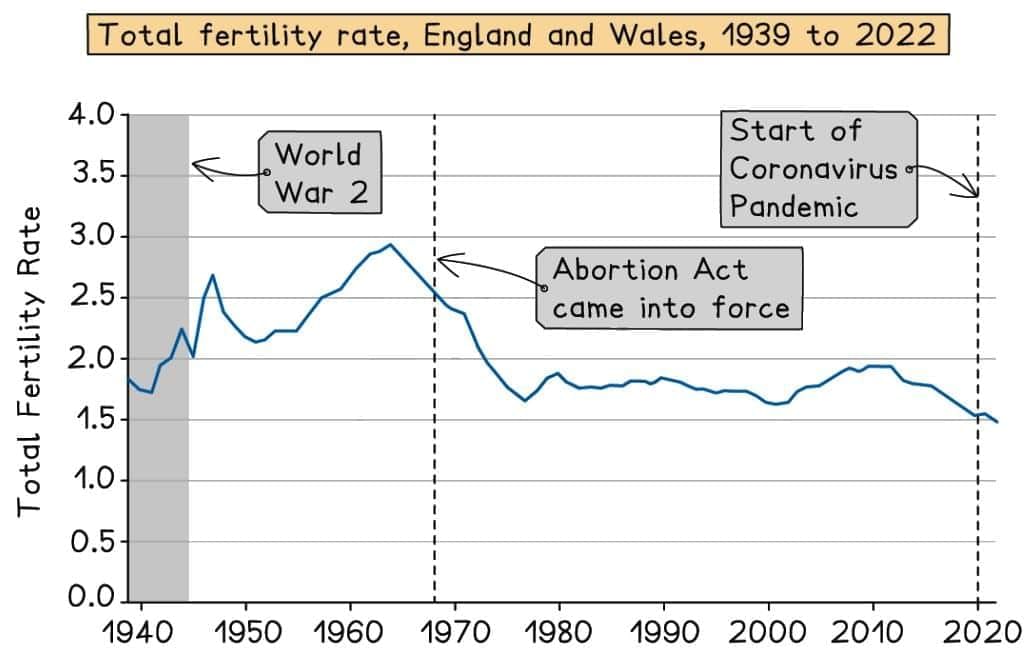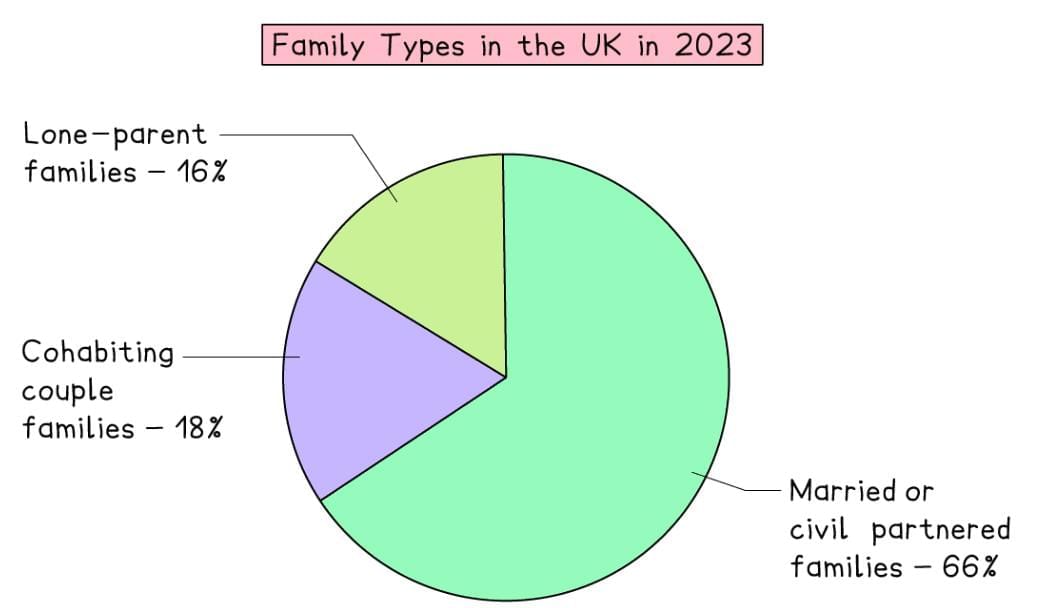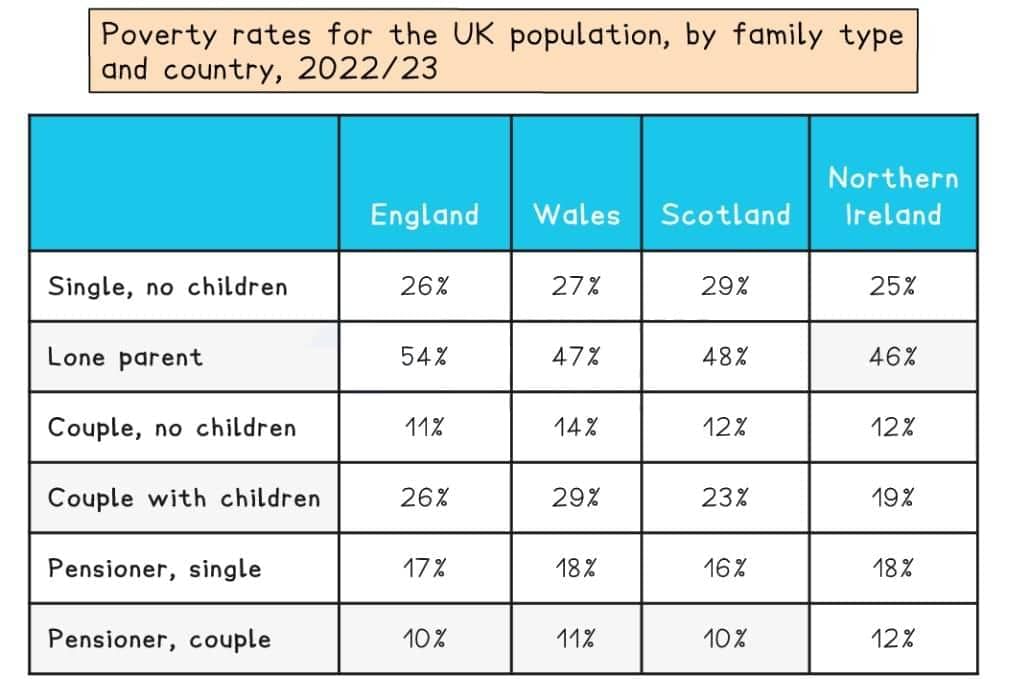Year 11 Exam > Year 11 Notes > Sociology for GCSE/IGCSE > Interpretation of Data
Interpretation of Data | Sociology for GCSE/IGCSE - Year 11 PDF Download
| Table of contents |

|
| Analysing Statistical Data |

|
| Bar Charts |

|
| Line Graphs |

|
| Pie Charts |

|
| Tables |

|
Analysing Statistical Data
- When presenting numerical data, graphs and charts are often utilized, particularly to highlight trends.
- A trend indicates the general direction in which data moves. For instance, the number of marriages or divorces may increase, decrease, or fluctuate (showing significant ups and downs).
Bar Charts
- Bar charts visually represent data where the x-axis displays discrete (non-continuous) categories, such as A-level exam entries by gender or "yes/no" responses from a survey.
- Unlike histograms, bar charts feature gaps between categories on the x-axis.
- The x-axis represents the categories (e.g., gender or time periods), while the y-axis shows the frequency, expressed as a score, number, or percentage.
 An example of a bar chart (Gender Pay Gap Report, The Insolvency Service, 2024)
An example of a bar chart (Gender Pay Gap Report, The Insolvency Service, 2024)
Line Graphs
- Line graphs are used to display quantitative data collected over a specific time period, illustrating changes that occur over time.
- The x-axis typically represents the time period, while the y-axis indicates the frequency in terms of score, number, or percentage.
- Line graphs effectively show whether a trend is increasing, decreasing, or remaining stable.
 An example of a line graph (Office for National Statistics, 2024)
An example of a line graph (Office for National Statistics, 2024)
Pie Charts
- Pie charts provide a visual representation of all items within a data set, with each category depicted as a sector (or slice) of the chart.
- The size of each sector corresponds to the frequency of that category, making it easy to compare proportions.
- Pie charts are ideal for representing categorical data, such as different family types or crime categories in the UK, offering a straightforward way to compare data visually.
 An example of a pie chart
An example of a pie chart
Tables
- Once quantitative data is collected and organized, it can be presented in a table, which arranges information systematically into rows and columns.
- This structured format facilitates easy comparison and analysis of numerical data.
- Tables are the most common method for presenting analyzed data, enabling clear comparisons and informed conclusions.
 Social Metrics Commission, Measuring Poverty, 2024
Social Metrics Commission, Measuring Poverty, 2024
The document Interpretation of Data | Sociology for GCSE/IGCSE - Year 11 is a part of the Year 11 Course Sociology for GCSE/IGCSE.
All you need of Year 11 at this link: Year 11
|
131 docs|2 tests
|
FAQs on Interpretation of Data - Sociology for GCSE/IGCSE - Year 11
| 1. What are the main differences between bar charts, line graphs, and pie charts in statistical data analysis? |  |
Ans. Bar charts are used to compare quantities across different categories, using rectangular bars to represent the values. Line graphs are ideal for showing trends over time, connecting data points with a line to illustrate changes. Pie charts represent parts of a whole, displaying percentage distributions of different categories in a circular format, making it easy to visualize proportions.
| 2. How can I interpret data presented in tables effectively? |  |
Ans. To interpret data in tables effectively, start by identifying the headings to understand what each column and row represents. Look for patterns, trends, or significant differences in the data. Pay attention to the scale and units of measurement, and consider calculating percentages or averages to gain deeper insights. Cross-referencing data points can also help in drawing conclusions.
| 3. What are some common mistakes to avoid when analyzing statistical data? |  |
Ans. Common mistakes include misinterpreting scales on graphs, overlooking the context of the data, and failing to consider the sample size or potential biases. Additionally, it’s important to avoid drawing conclusions based solely on visual representations without backing them up with statistical analysis. Mislabeling axes or using inappropriate chart types for the data can also lead to confusion.
| 4. How can I utilize statistical data to support my arguments in a project or presentation? |  |
Ans. To effectively utilize statistical data in a project or presentation, start by selecting relevant data that aligns with your argument. Use appropriate visualizations, such as charts or graphs, to make the data more accessible. Explain the significance of the data, highlighting trends or key points that bolster your argument. Always cite your sources to enhance credibility.
| 5. What skills are essential for analyzing statistical data? |  |
Ans. Essential skills for analyzing statistical data include critical thinking, mathematical proficiency, and familiarity with statistical concepts like mean, median, and mode. Proficiency in data visualization tools and software is also beneficial, as it allows you to create graphs and charts effectively. Lastly, having the ability to interpret and communicate findings clearly is crucial for presenting data insights.
Related Searches



















